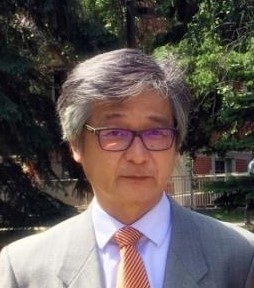
Dr. Tatsuya Kin earned his MD degree at the Nara Medical University, Japan in 1988. After he completed a general surgery residency, he received PhD in experimental surgery with a focus on islet cell transplantation. In 1998 he joined clinical islet transplantation team at the University of Alberta, Canada and contributed to success of the Edmonton protocol. Since then, he has been actively involved in more than 2,000 human islet isolations and over 700 islet transplantations. In 2007, he established Alberta Islet Distribution Program. The program has been distributing human islets for basic research to over 30 investigators all over the world. He also has been a key member of many clinical trials at the University of Alberta, including implantation of pancreatic endocrine precursor cells derived from human embryonic stem cells.
Initial experience of islet isolation and transplantation from donors following medical assistance in dying
Tatsuya Kin1, Doug O’Gorman1, Shawn Rosichuk1, Brad Richer1, Wendy Zhai1, Jennifer Moriarty1, Kyle Park1, Peter Senior1, AM James Shapiro1.
1Clinical Islet Transplant Program, University of Alberta Hospital, Edmonton, AB, Canada
Introduction: In Canada, medical assistance in dying (MAID) became legal in June 2016. Between 2016 and 2019, there were 13,946 cases of MAID reported in Canada. Limited information is currently available as for the outcomes of islet isolation and transplantation using MAID donors.
Methods: As of June 01, 2021, there were 23 offers from MAID donors to our islet transplant program and 16 cases were declined mainly due to the absence of virtual cross match negative recipients (n=12). We processed the pancreases from seven donors following MAID for islet transplantation. Underlying disease of the seven donors were as follows; amyotrophic lateral sclerosis in 4, multiple system atrophy in 2, and multiple sclerosis in 1. Donor age, body mass index, and cold ischemia time ranged from 48 to 63 years, from 21.3 to 38.5 m2/kg, and from 8.7 to 15 hours, respectively.
Results: Islet isolations from three of four donors with amyotrophic lateral sclerosis were unsuccessful as pre purification yield was < 220,000 IE. However, we recovered > 440,000 IE at post purification from the remaining four donor pancreases and proceeded for transplantation. Unfortunately, a potential recipient refused the transplant due to personal reasons and no other potential recipients were available, thereby the preparation was not used for transplantation. The remaining three preparations were transplanted after culture (22, 32.8 and 30.5 hours) into three recipients. The first recipient became insulin independent (insulin usage from 0.28 to 0 U/kg) after receiving 7,918 IE/kg (456,049 IE) from a single donor. The insulin usage of the second recipient reduced from 0.97 to 0.32 U/kg after infusion of 10,026 IE/kg (852,207 IE). The last patient received 5,477 IE/kg (448,548 IE) and insulin requirement went down from 0.50 to 0.26 U/kg at one month post transplant.
Conclusions: Islets isolated from MAID donor pancreas can be successfully transplanted. Careful consideration of preexisting donor-transmissible disease states is required. Although further experiences are warranted, underlying disease of MAID case may affect islet isolation outcomes.